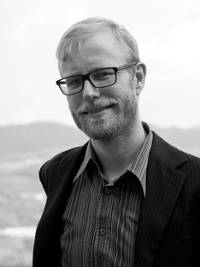Thorsten Lang

XXIX Cycle - (A.A. 2013-2014)
IDAUP
Home Institution: University of Ferrara
Without Scholarship
Curriculum: Architecture (ICAR12)
Research Topic: Design automation in early stage design
Tutor DA-UNIFE: Roberto Di Giulio
Tutor University of Malta: Ruben Paul Borg
Nationality: Dutch
Email: thorsten.lang@unife.it
Profile
Biography
Thorsten Lang graduated as an architect at the Amsterdam School of the Arts, after obtaining a degree in building engineering at the Amsterdam University of Applied Sciences. In 2008 his thesis project “Crystal” was nominated for the Dutch Archiprix award. He has been working as an architect in Italy since 2007, both in large professional offices and as a free professional. As a researcher he was involved in the Streamer European applied research project. For his thesis on design automation in 2017 he was awarded a Phd at IDAUP programme of the University of Ferrara/Polis University.
Research skills
Open BIM | Semantics | Design Theory | Design Automation | Rule based design
Scientific activities
ORCID ID:
0000-0002-7527-7421
IRIS UNIFE ID:
rp00000
Doctoral research
Semantic BIM Design Methodology for Energy Efficient Building
The purpose of the research is to improve the early stage design process, with computer aided design, allowing more design options to be compared and anticipating feedback on choices that influence the building's energy consumption. To reach this purpose the role of the human designer and the encountered limits of the computer aided design process are analysed. As a practical application, the researcher took a layout generating tool developed within Streamer, the European applied research project he collaborated on. A semantic BIM design method using open standards for early stage design is described, the main building typology referenced is hospitals, suitable for their strict functional requirements and high energy consumption. Within the method’s workflow, the design process starts from a classification of Programme of Requirement data, which is then used to generate alternative design layouts. The generated proposals are evaluated by an evolutionary algorithm, based on pre-defined prioritised design rules. Several alternative designs can be exported with data retained for downstream use. E.g. an automated energy calculation uses the semantic data contained in the file. A decision support system is used to compare and evaluate the generated options. To close the inquiry a speculative investigation of other building typologies attempts to understands the limits of the automated process and tools and the creative contribution of the human designer. It seeks to describe which adaptations are required to design other building typologies. The philosophy of the method and its strengths and limitations are discussed and topics for future research are outlined. In conclusion, the researcher proposes an iterated interaction between designer and brief to combine the strengths of the human designer and the semantic design method.
Keywords
Open BIM | Semantics | Design Theory | Design Automation | Rule based design

